I M a Disney Princess Until I Get My Hogwarts Letter
1. The "96,000" number from In the Heights wasn't originally set in a public pool; director Jon M. Chu and screenwriter Quiara Alegría Hudes decided it was the ideal spot to film the song while looking around Washington Heights one day.

Chu told BuzzFeed that the pool was the perfect place to showcase "the beauty of the shapes and sizes of Washington Heights with the colors of their skin."

The sequence featured somewhere in the realm of 600-700 extras, who ranged in age from 5 to 80. Reflecting on the difficulty of the shoot, Chu said, "Every step of the way of this show — and Quiara and Lin [-Manuel Miranda] instilled this in me — everything is against this show for being made, and we have to power through. So everything that would come up to us, including the pandemic...paciencia y fe, always came back. Just keep pushing, it will happen. And this is the perfect moment for this movie; you could not have predicted this moment of this movie coming out. But it is the moment that it chose to come out."
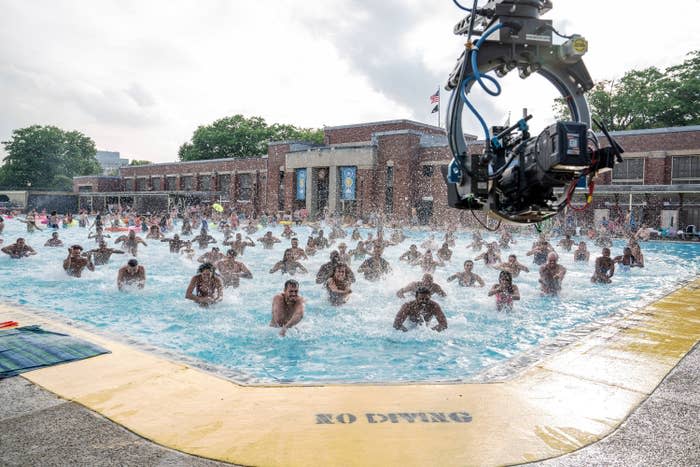
"Paciencia y Fe" means "patience and faith." It is also the title of the song Abuela Claudia sings in the latter half of the musical, and the character's signature catchphrase (and guiding philosophy).

If you want to read more In the Heights behind-the-scenes insights from the director himself, check out this interview.
Warner Bros. / courtesy Everett Collection2. Sharon Duncan-Brewster, who starred as Dr. Liet Kynes in Dune, told the Hollywood Reporter that while the men's stillsuits (i.e., the water-preserving outfits worn on the desert planet Arrakis) were made to be, let's say, bathroom friendly, the women's outfits had no such accommodations.
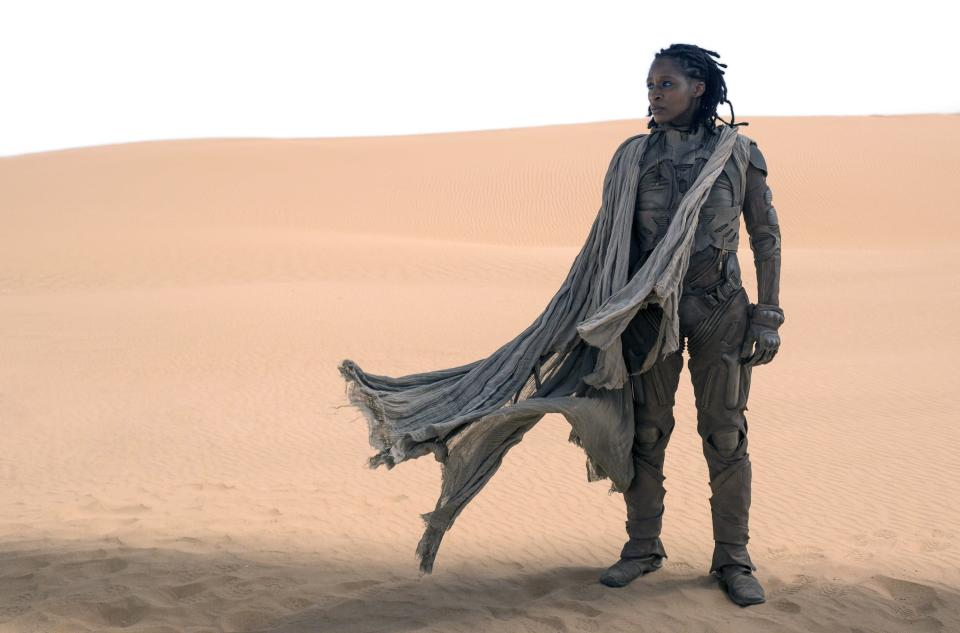
Duncan-Brewster said, "And look, this is just me telling the truth, but the guys had stillsuits that had openings for them to be able to quickly relieve themselves, in the sense of going to the toilet. Whereas for myself and all the women, we had to take the entire thing off to go to the toilet, and that's quite a tricky thing because they stick to you."

Despite that inconvenience, Duncan-Brewster went on to say that the stillsuits were invaluable in terms of getting into character. She added, "I'd put one on now and party in it just for old time's sake."
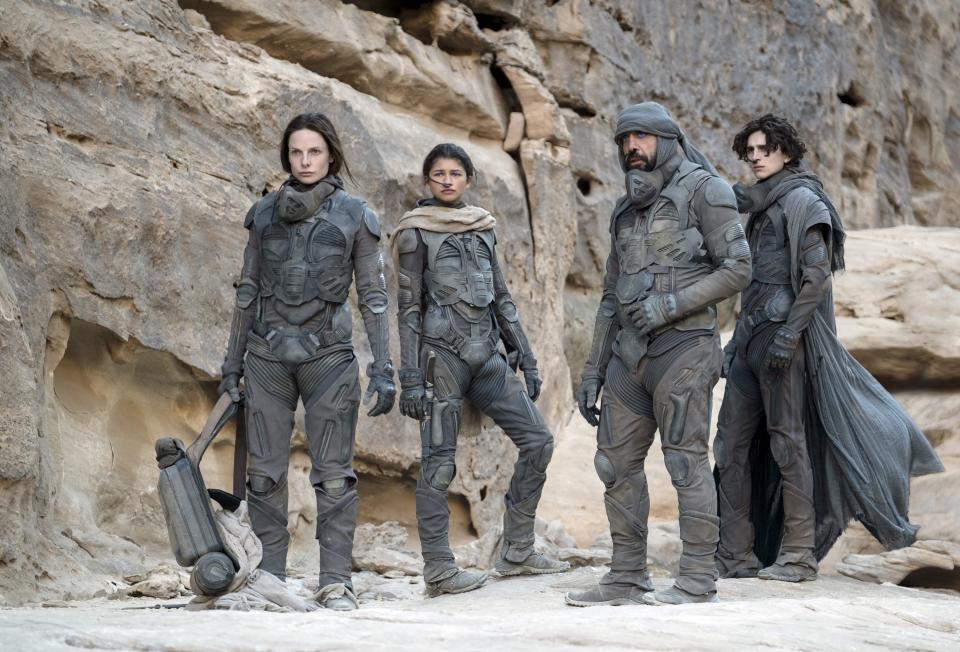
If you want to read more behind-the-scenes facts about Dune, check out this post.
Warner Bros. / Courtesy Everett Collection3. Emma Stone had to ditch the title character's signature cigarette holder (and cigarette) when she starred in Cruella, most likely because Disney didn't want to glorify smoking to a young audience.

When asked about it by the New York Times, Stone replied, "That is not allowed in 2021. We are not allowed to smoke onscreen in a Disney film. It was difficult to not have that cigarette holder."

She went on, "I was so excited to have that green plume of smoke in there, but it was not possible. I don't want to promote smoking, but I'm also not trying to promote skinning puppies."

If you want to read more behind-the-scenes facts about Cruella, check out this post.
Disney / Courtesy Everett Collection4. Lady Gaga ad-libbed the moment in House of Gucci where she crosses herself and says, "Father, Son, and House of Gucci."

She told Variety, "I would do it in the trailer all the time. I was doing it in the trailer and then something about that scene when we were doing it felt right. We did it, and it's a testament to Ridley Scott as a director because he uses the stuff. He uses the creativity. He uses the love."

Roberto Bentivegna, the screenwriter, told Variety, "It's iconic. Amazing. There was so many great ad libs that didn't make the cut. That was certainly a great one. They just had such a great time riffing. I think that some writers might feel like their words are precious and everything has to be respected, but for me it was joyful. It was like they're feeling it. It's like music. It's like they're jamming and the melody is taking them to this awesome improvisation. I was very flattered that they felt like doing that."
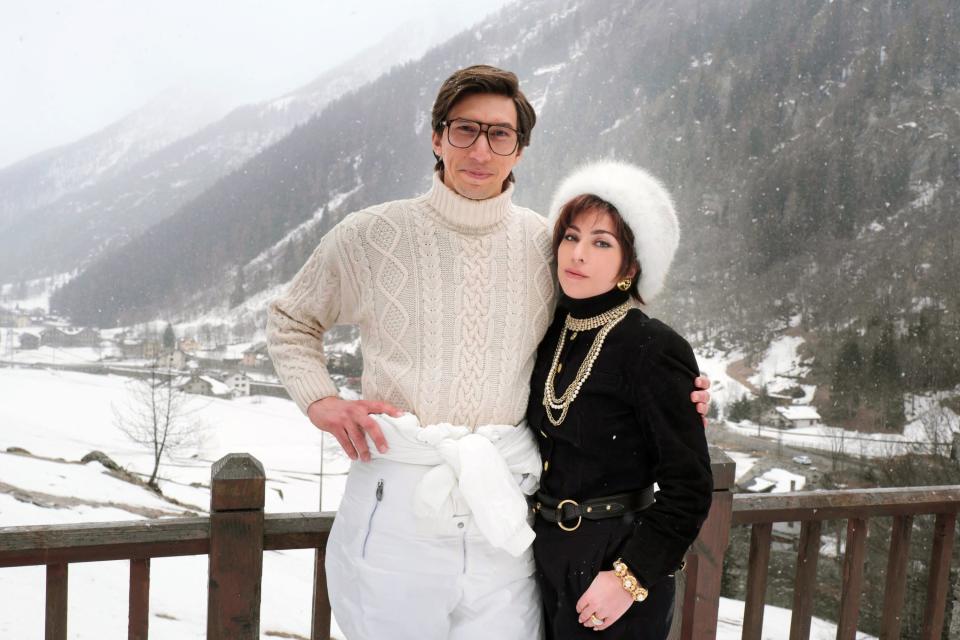
5. When Rachel Weisz, who starred as Melina Vostokoff in Black Widow, heard that there was a chance that her character's test subject/bestie Alexei the pig was going to remain outside during a scene, rather than enter the house and demonstrate some creepy mind control science, she fought back.

In an interview with BBC Radio 1, Weisz recalled that she told the director, "Cate [Shortland], one of the reasons I did this movie was to do that scene with Alexei the pig. Please, can you keep it?"

Despite concerns over the logistics of including "animal actors" in a scene, Alexei got to keep his moment in the spotlight.

If you want to read more behind-the-scenes facts about Black Widow, check out this post.
Marvel Studios / youtube.com6. Michael Rianda, the writer-director of The Mitchells vs. the Machines, told the Hollywood Reporter that he took inspiration from "James Turrell installations and Stanley Kubrick movies" to create "machines [that] are maybe a little too perfect" in this tale of a family fighting back against robotic world domination.

One animator working on the film looked to a recording of a 1999 Microsoft press conference for creative guidance, since, as Rianda put it, one of the film's goals was to "be observational about what tech companies do, because some of the stuff they do is scary, and they want to put a clean, cute face on it."

However, Rianda noted that the pandemic, and the limits it placed on in-person communication, necessitates a more "even-handed" approach to tech. He said, "During COVID, we couldn't communicate with each other without technology... It's already part of the family, it's at your dinner table."

(This image of the Mitchell family dog doesn't have much to do with Rianda's observation about the place of technology in modern society, but I like it too much to not include it.)
Netflix / Courtesy Everett Collection7. According to director's commentary on Shang-Chi and the Legend of the Ten Rings, neither director Destin Daniel Cretton nor co-screenwriter Dave Callaham thought Morris, the fuzzy faceless winged critter, would make it into the movie.
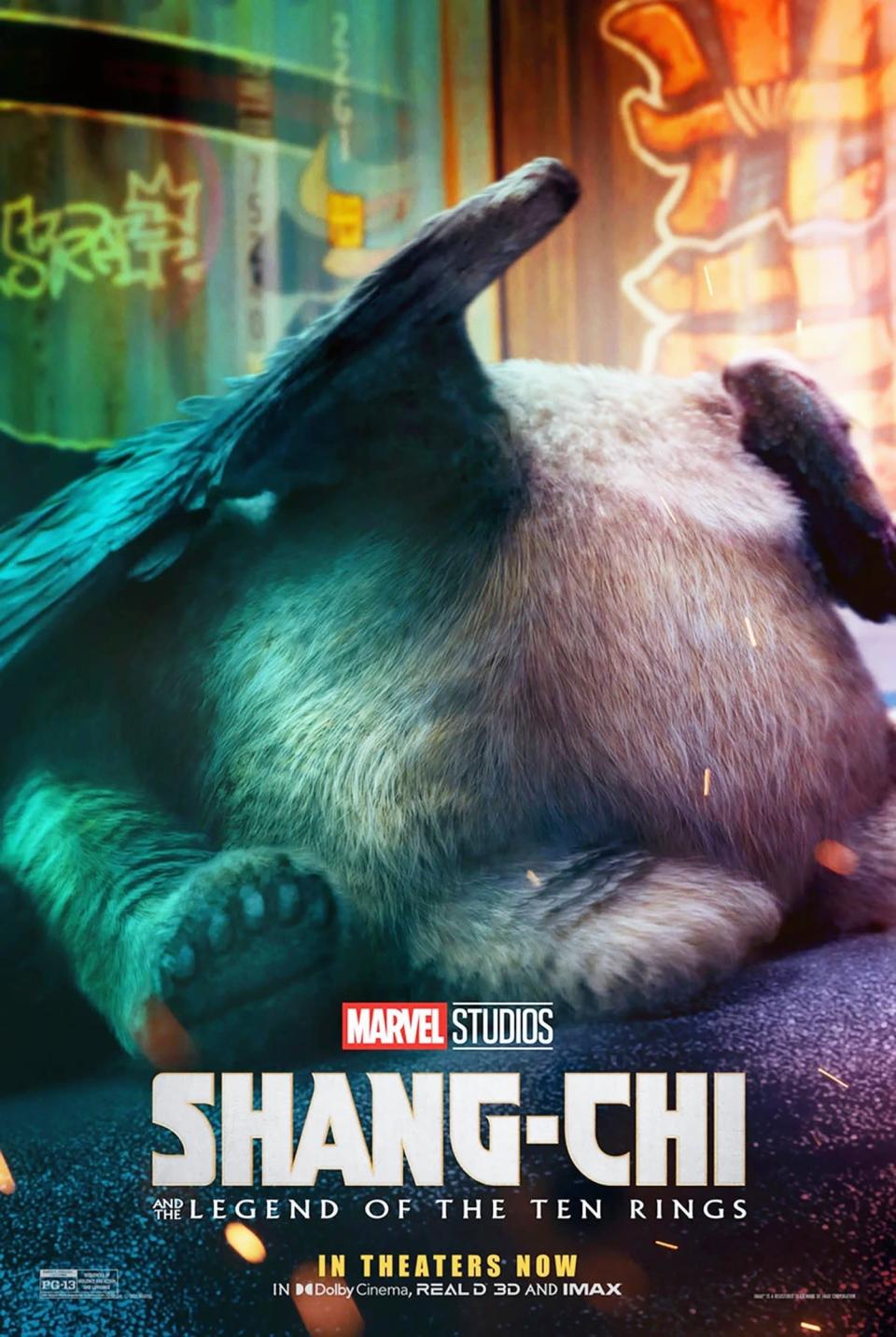
First, they thought Marvel boss Kevin Feige would say no, but he told them to go for it.
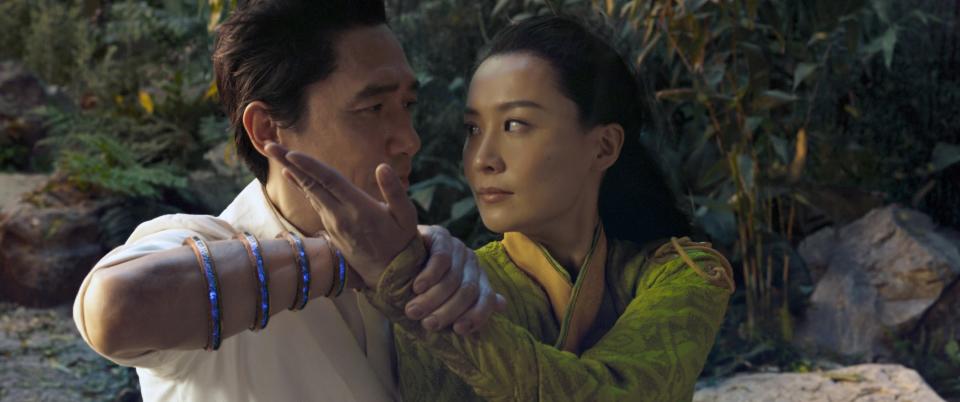
Then, they thought he would get cut out of the final version. Callaham told Cretton that if Morris survived production, he'd get a tattoo of him. Morris did, and Callaham, apparently a man of his word, said, "As of this recording I have not procured that tattoo, mostly due to Covid issues, but I will do so."

8. Shawn Levy, the director behind the video game comedy Free Guy, told the Hollywood Reporter that he, along with the film's star Ryan Reynolds, decided to include a Jeopardy! scene to communicate that Reynolds' character has become a cultural touchstone.
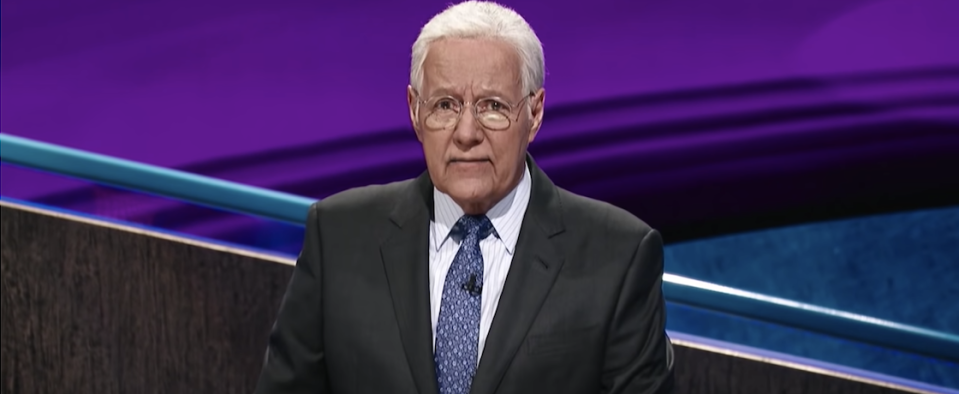
Levy said, "So we came up with the idea that if you're an answer on Jeopardy, then you're in the culture. We asked Mr. Trebek if he would do it, and he said, 'Sure! Sounds fun.'"

The sequence, which Levy didn't personally direct, took about 20 minutes to film. Free Guy was released in August 2021; longtime Jeopardy! host Alex Trebek died in Nov. 2020. Said Levy, "It's both poignant and really meaningful to Ryan and I that he's a part of our movie and that we had the privilege of that."

If you want to read more behind-the-scenes facts from Free Guy, check out this post.
20th Century Studios / youtube.com9. James Gunn told CinemaBlend that there was an alternative ending to The Suicide Squad that was, to put it lightly, a huge bummer.
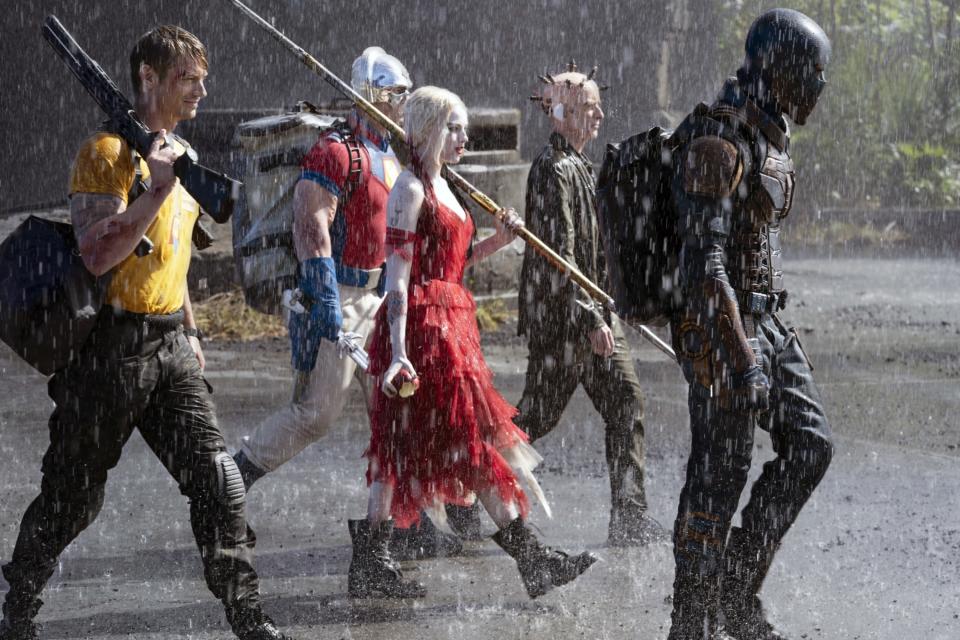
In this ending, Ratcatcher 2 would've been killed by Amanda Waller, devastating Bloodsport, "because he's connected to this person, like a daughter."
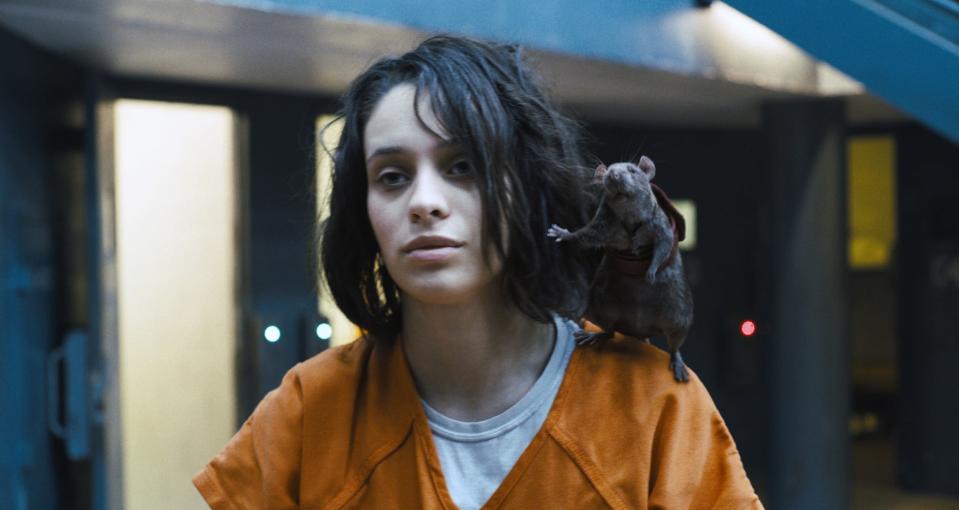
Bloodsport would've gotten his revenge on Waller by shooting her "right below the heart with one of the exploding bullets, which we see Peacemaker using earlier in the movie. And so now she has to do what he says."

Gunn said he abandoned this ending because, "It was just too dark for me. It was really just too dark. It didn't really work for me. It didn't really tell the story that I wanted to tell, which is much more about the characters' different journeys, emotionally. And for me, really, the ending with Bloodsport petting the rat...That, to me, was the perfect ending for the movie."

10. Kristen Stewart's Princess Diana dialect coach for Spencer, William Conacher, was the dialect coach for not one but two other onscreen Dianas: Emma Corrin, of The Crown, and Naomi Watts, of 2013's Diana.

Stewart told the Guardian, "She had such a particular way of talking, and she makes me feel something so specific to her. It was like a full-body exercise — the most muscular, unintuitive, yet extremely instinctive thing. It was weird: I needed to master it in order to kind of mess it up."

If you want to learn more about what's fact and what's fiction in Spencer, check out this post.
Neon / Courtesy Everett Collection11. The idea for Minari emerged from an afternoon director Lee Isaac Chung spent at the library writing down a list of 80 memories from his childhood.

Chung told NPR, "Once I had this set of memories, I realized that there was an arc of a story there. This family showing up in the middle of nowhere, really, with the dad not having told anyone in the family that he was going to buy this farmland."

Chung also discussed feeling nervous about his family seeing the finished film, since so much of it was drawn from their lives. Reflecting on the day he screened it for them, Chung said, "We watched the film together and slowly I just started to see my mom starting to weep, my sister, my dad. And it just felt like it was such a cathartic experience for all of us. It was really special, really incredible." Chung didn't outright disclose the autobiographical nature of the film until he showed it to his family, though they had their suspicions based on the questions he asked about details from their past.

12. Kaz and Ryan Firpo, the screenwriters behind Eternals, told BuzzFeed that their first choice for the character of Kingo was none other than the actor who ended up taking the role: Kumail Nanjiani.

Ryan said, "What's wild about working with Marvel is that these dream castings can become a reality. Every time we write, I really like to have a cast in my head. I'm a fan of movies, so it just helps me to see the character if I cast an actor in my head. When we were writing Kingo, we were like, 'This has to be Kumail. There's nobody else."
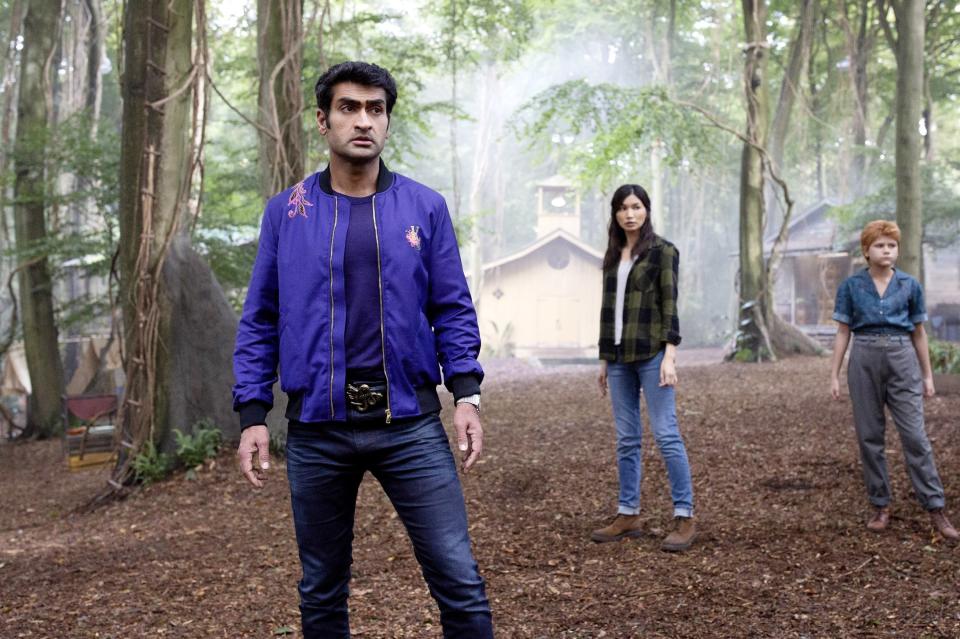
And one of their favorite jokes in the movie was Kingo's Bollywood backstory. Said Ryan, "I was really happy with how that whole gag came out."

13. Suttirat Larlarb, the costume designer behind No Time to Die, told Vogue that she incorporated a mask into one of Rami Malek's pivotal scenes as the villainous Safin, both to reference the character's heritage and to lend to him some extra "depth and complexity."

The mask itself is borrowed from the "classical Japanese dance-drama Noh," and Safin wears it while he hunts the murderer of his family, Mr. White. According to Larlarb, "Noh masks are expressionless. How they're perceived depends on the movements of the actors and the angle you view them from. They can be seen as pensive or serene, depending on your perspective. That variety gave Rami the tools to encapsulate the arc of Safin, who is Japanese and Russian."

14. Kelly Marie Tran told Vanity Fair that she believed that there were "some romantic feelings going on there" between her character, Raya, and Raya's adversary Namaari during their climatic showdown in Raya and the Last Dragon.

Tran noted that this was not necessarily Disney's official stance, and said, "I think if you're a person watching this movie and you see representation in a way that feels really real and authentic to you, then it is real and authentic. I think it might get me in trouble for saying that, but whatever."

She added, "I want to live in a world where every single type of person can see themselves in a movie like this. There's a lot of work to be done in that respect. I'd love to see a Disney warrior who — I don't know, can I say this without getting in trouble? I don't care — is openly in the LGBTQ community. I would love to see representation in terms of someone who maybe isn't able-bodied. And I'm hopeful. We'll see."

15. Carey Mulligan told BuzzFeed that Promising Young Woman director Emerald Fennel cast actors with "nice guy" personas to purposefully play with the audience's expectations of how their characters would behave.
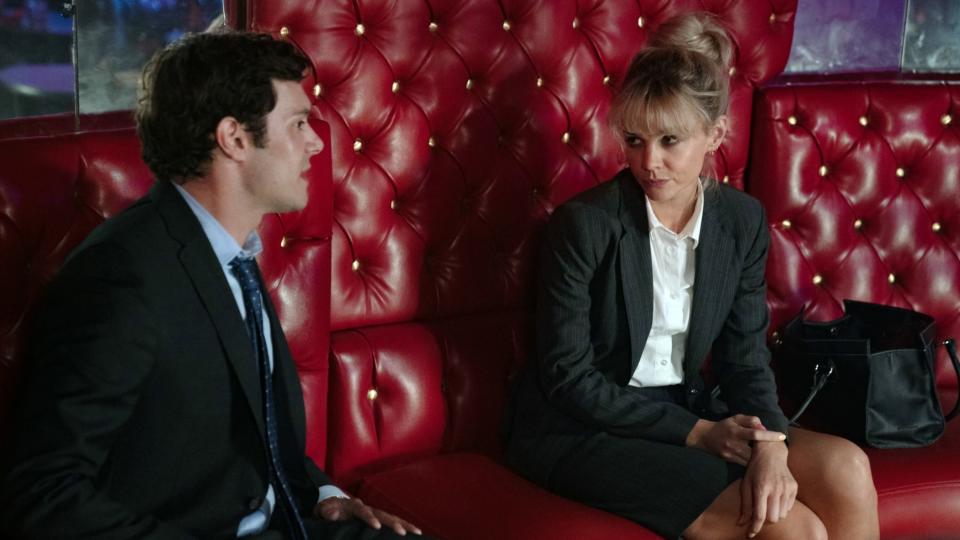
Mulligan said, "It was absolutely intentional on Emerald's behalf. She wanted people that you felt warmly towards and comfortable with. I don't think those scenes work if you have expectations that somebody is going to be not a nice guy. I think if you see the guy who ordinarily plays the villain, the impact isn't really there."
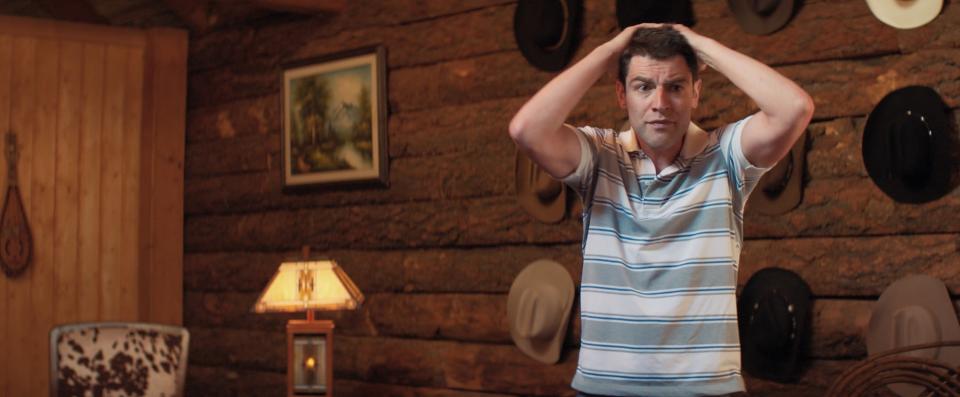
Also, she asked to keep the nurse's outfit after filming wrapped, because she thought it was "just hilarious."

To read more of Mulligan's insights into the film, check out this post.
Focus Features / Courtesy Everett Collection16. The production team behind CODA (an acronym that stands for "children of Deaf adults") were careful to accurately recreate the day-to-day lives of Deaf people.
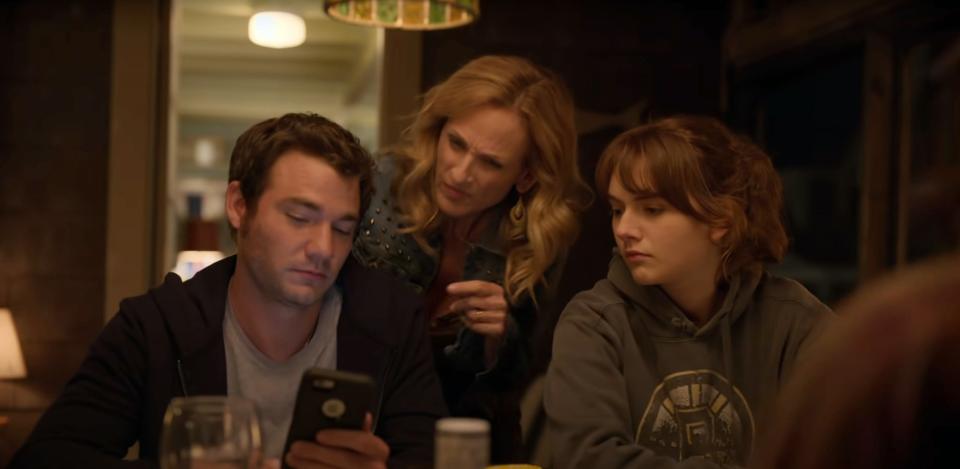
For instance, the film is set in Gloucester, Massachusetts. Director Sian Heder told the Hollywood Reporter that American Sign Language "has regionalisms just in the way that a Boston accent would." Thus, the cast learned how to sign the name of the city, as well as names for different types of fish native to the area, since Gloucester's primary industry is fishing (and the main characters, the Rossi family, are themselves fishermen).

And when Anne Tomasetti, one of the film's ASL masters, saw the Rossi family home, she pointed out that their couch should be facing the door, so that they could see any visitors enter. Said Heder, "It was like this 'of course' moment."

Troy Kostur, who played family patriarch Frank Rossi, said about Heder, "She had done her homework. And not many directors do that. They put you in there, they throw an interpreter next to you, and they kind of work their way through it."

17. The filmmakers behind Pig asked Gabriel Rucker, the chef and owner of Le Pigeon in Portland, to work as a creative consultant on the film, and come up with a dish for the main character, played by Nic Cage, to cook.

Rucker told Uproxx, "They said, 'We want you to create a dish for him to cook. Here's the screenplay, we want you to make a dish for him to cook for this scene.' It was very easy for me, because the dish they wanted me to cook was very similar to what we were doing at my restaurant, Le Pigeon, back in 2006, 2007." Cage himself came to Le Pigeon to learn some cooking skills from Rucker, including "butter basting with food, and tearing mushrooms apart, and how to chop through and break down the pigeons and cut them up."
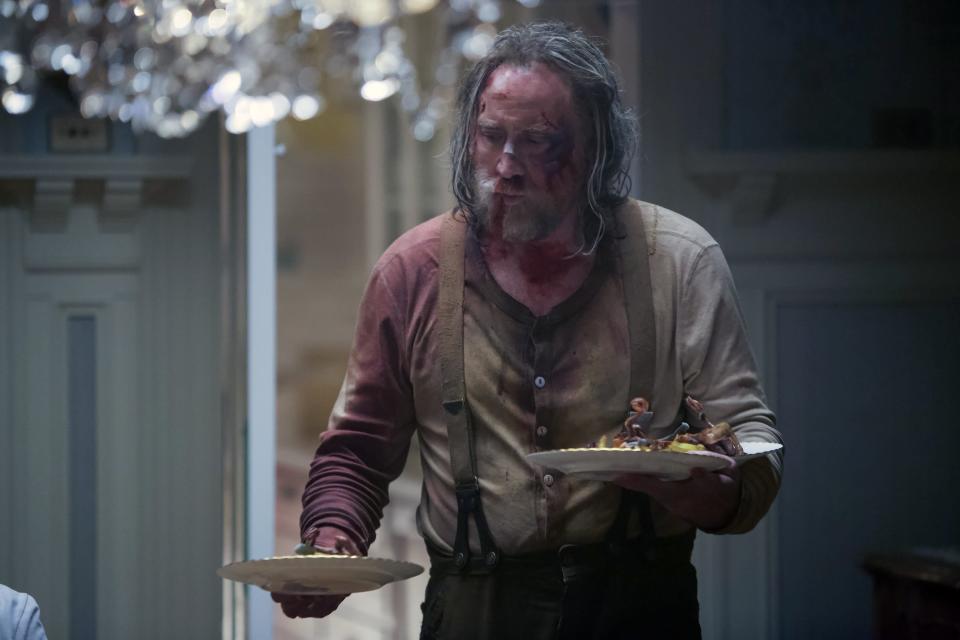
The dish was "pan-roasted pigeon with chanterelle mushrooms, pommes Anna, and huckleberry sauce."

18. Luca director Enrico Casarosa based the friendship between young sea monsters Luca and Alberto on his own relationship with his childhood bestie, who was also named Alberto.

When asked about his inspiration for the movie, Casarosa told Deadline, "For this one, it was the memory of my best friend and I. Him being this very free troublemaker really helped me, being more of a shy, timid kid, to come out of my shell. The friendships we have with people that are very different from us is something that so many of us have had experience with."

He went on, "We [Casarosa and Alberto] ultimately had to also go our separate ways. That's what's interesting about friendship, is that it's so important, but we also often have to leave them behind. There were a lot of memories of my childhood that I thought would make for such a wonderful world to explore, and for these kids to experience for the first time. So, it felt like a great way to explore those memories of my childhood with a love letter to Italy."
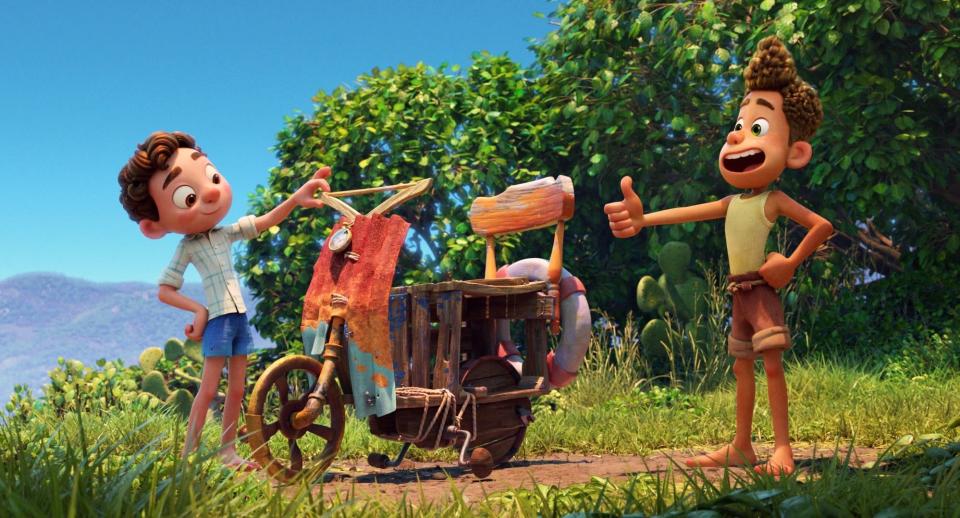
19. And finally: Lin-Manuel Miranda, the director of Tick, Tick... Boom!, was just one of many, many Broadway legends who made a cameo appearance in a diner scene, and his appearance replaced that of two other actors who couldn't make the shoot due to pandemic restrictions.

The intended cast members were Joanna Gleason and Chip Zien, who were members of the original Into the Woods cast. About the cameo-laden sequence, Miranda told Entertainment Weekly, "It's just this galaxy brain ecstasy. The whole thinking was the biggest, most beautiful version of it possible."

For a full breakdown of all of Tick, Tick... Boom!'s many cameos, check out this post.
Netflix / Courtesy Everett CollectionThe year is almost over, and we're looking back on 2021. Check out more from the year here!
I M a Disney Princess Until I Get My Hogwarts Letter
Source: https://www.yahoo.com/entertainment/19-utterly-fascinating-behind-scenes-081602976.html
0 Response to "I M a Disney Princess Until I Get My Hogwarts Letter"
Post a Comment